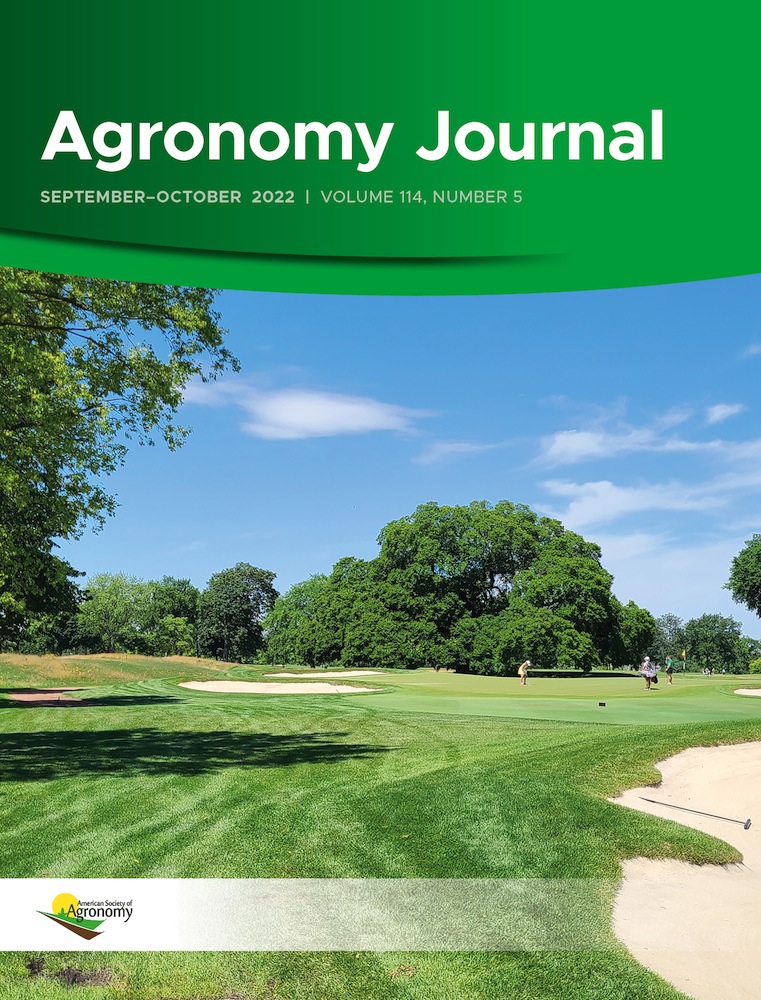Ver ítem
- xmlui.general.dspace_homeCentros Regionales y EEAsCentro Regional Salta - JujuyEEA SaltaArtículos científicosxmlui.ArtifactBrowser.ItemViewer.trail
- Inicio
- Centros Regionales y EEAs
- Centro Regional Salta - Jujuy
- EEA Salta
- Artículos científicos
- Ver ítem
Sowing density rather than row spacing influences chia radiation use and yield
Resumen
Chia (Salvia hispanica L.) production worldwide has been encouraged due to its high essential fatty acid content that is effective for reducing cardiovascular affections. However, few studies have assessed the sowing density and row spacing to maximize chia grain yield (GY) and found controversial results. None of them reported effects on radiation interception and use efficiency that could help to clarify the controversial results. The objective of this
[ver mas...]
Chia (Salvia hispanica L.) production worldwide has been encouraged due to its high essential fatty acid content that is effective for reducing cardiovascular affections. However, few studies have assessed the sowing density and row spacing to maximize chia grain yield (GY) and found controversial results. None of them reported effects on radiation interception and use efficiency that could help to clarify the controversial results. The objective of this study was to determine the effects of sowing density and row spacing on radiation interception and radiation use efficiency (RUE) of chia and their effects on chia growth and yield. Two field trials were conducted in Salta, Argentina, during 2017 and 2018, combining two factors: sowing density (5, 9, 13, 17, and 21 plants m−2) and row spacing (0.26 and 0.52 m). Photosynthetically active radiation (PAR) interception (PARi), RUE, biomass and GY components were measured. There was a clear effect of sowing density on the main growth and yield attributes, whereas there were no effects of row spacing. Sowing density had a greater impact on PARi than row spacing. Increasing sowing density increased PARi and RUE through earlier time of maximum PARi, accumulating more PAR producing more biomass and GY. Grain yield, which increased by 73 kg ha−1 per unit increase in plant density, was closely associated with biomass, grain number, and verticillaster number (VN), and negatively associated with 1,000-grain weight (TGW). Summarizing sowing density rather than row spacing had a greater impact on growth and yield attributes of chia.
[Cerrar]

Autor
Anuch Tiranti, Juan Valentín;
Curti, Ramiro Nestor;
Acreche, Martin Moises;
Fuente
Agronomy Journal : 1-9 (First published: 10 October 2022)
Fecha
2022-10
Editorial
Wiley
ISSN
1435-0645
Documentos Relacionados
Formato
pdf
Tipo de documento
artículo
Proyectos
(ver más)
INTA/2019-PD-E3-I060-001/2019-PD-E3-I060-001/AR./Adaptación de los cultivos al cambio climático: Bases ecofisiológicas para el manejo y la mejora genética
Palabras Claves
Derechos de acceso
Restringido
 Excepto donde se diga explicitamente, este item se publica bajo la siguiente descripción: Creative Commons Attribution-NonCommercial-ShareAlike 2.5 Unported (CC BY-NC-SA 2.5)
Excepto donde se diga explicitamente, este item se publica bajo la siguiente descripción: Creative Commons Attribution-NonCommercial-ShareAlike 2.5 Unported (CC BY-NC-SA 2.5)

